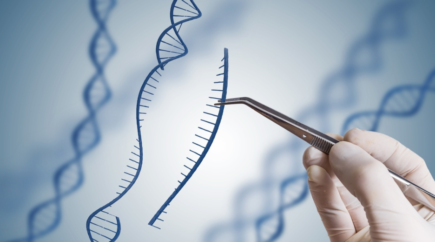Polyplus provides an integrated service for design and production of tailor-made DNA plasmid through our unique and Innovative assembly technology.

Disease can be defined as an abnormal biological state that negatively affects the structure or function of part or all of an organism. Some diseases are triggered or aggravated by genetic disorders. In Human, genetic disorder can be caused by external factors, such as carcinogenic molecules or radiations, or can be inherited (e.g. family cancer syndrome or rare diseases).
A genetic disorder can be the result of a chromosomal anomaly (e.g. Down Syndrome) or the result of one or several mutations in specific genes. A mutated gene is a gene which nucleotide sequence has been altered in a way that the gene cannot fulfill it physiological function properly. For example, the coding sequence of a protein could be altered in a way that the protein encoded by the Gene would not be expressed at a sufficient level, or the expressed protein would not be enzymatically active enough due to a modified protein sequence.
When such mutations are detected in patients and clearly identified as the cause of a disease affecting them, there is an opportunity to treat the disease at the genetic level with the aim to cure the disease. Such treatment, that implies to manipulate the genomic DNA of the patient to correct the identified mutations, is termed Gene Therapy.

The concept of Gene Therapy is fairly new (1970s) and the actual applications are very recent with first approved clinical trials during the 90s and FDA approved the first gene therapy treatments in 2017[1].
The general mode of action of Gene therapy is to deliver exogenous nucleic acid to patient’s cells, whether ex-vivo or in-vivo, in order to modify the genomic DNA. In some cases, the modification can be the introduction of a new artificial gene (e.g. CAR-T cells therapy[2]). In others, the aim is to correct genetic mutations using Genome editing technologies such as CRISPR-Cas9[3] or Zinc Finger Nucleases[4] (ZFN) technologies.
The delivery of DNA into cells can be achieved by multiple methods. The two major kind are engineered recombinant viruses (or viral vectors) and naked DNA or DNA complexes (non-viral methods).
Although very promising at the technological and medical levels, Gene Therapy as a new medical field still needs to overcome several hurdles. Some hurdles are society related such as the ethical acceptance or the cost of the treatments. Other are technological, such as the management of off-target effect, the stability of the therapeutic genetic modification or the viral vectors themselves as they carry the risks of toxicity, inflammatory responses, and gene control and targeting issues.
This means that lots of research is still carried on in order to improve efficacity and safety of Gene Therapy. This research involves working on refinement of DNA vectors used to produce viral vectors or as therapeutic molecules directly. Thanks to the accuracy of its DNA assembly method, E-Zyvec has the ability to assist researchers for these pre-clinical studies.
[1] https://en.wikipedia.org/wiki/Gene_therapy
[2] https://www.cancer.gov/publications/dictionaries/cancer-terms/def/car-t-cell-therapy
[3] https://ghr.nlm.nih.gov/primer/genomicresearch/genomeediting
[4] https://www.sigmaaldrich.com/life-science/zinc-finger-nuclease-technology/learning-center/what-is-zfn.html